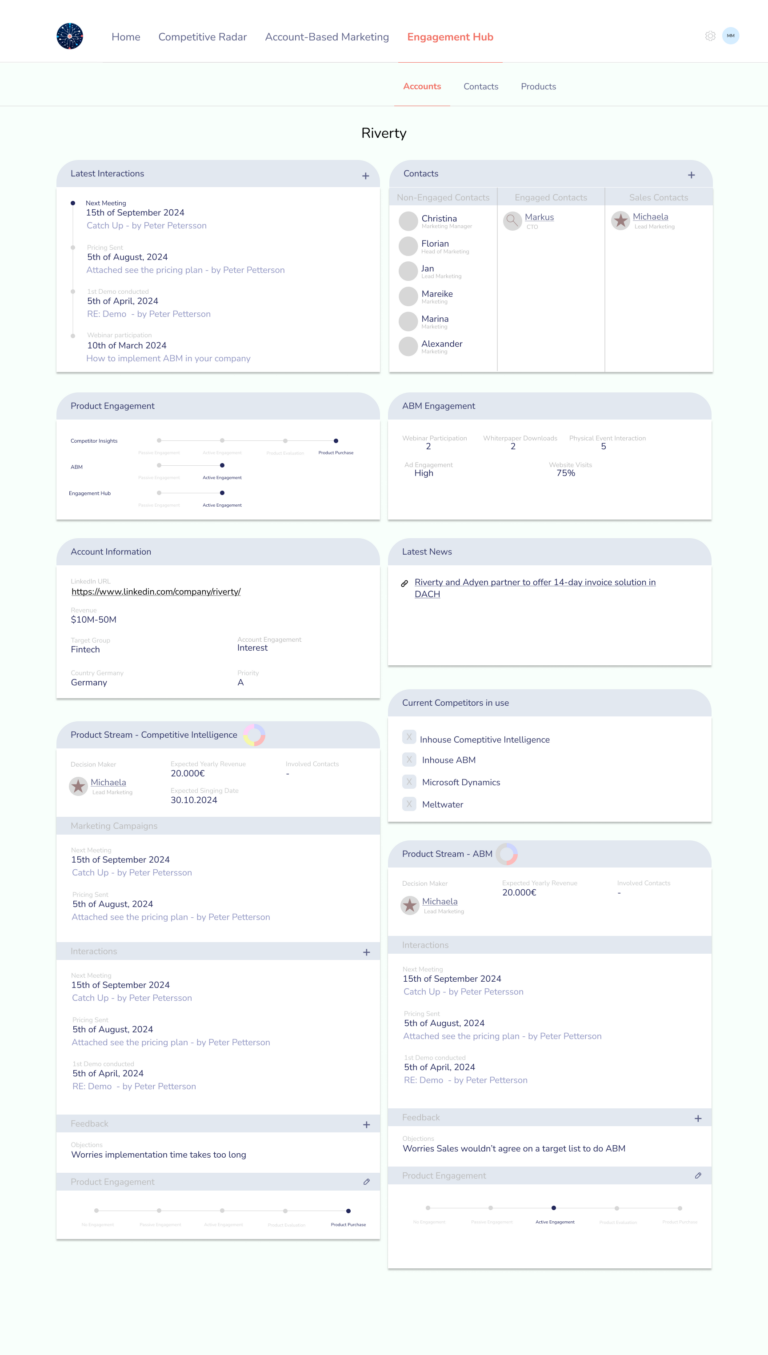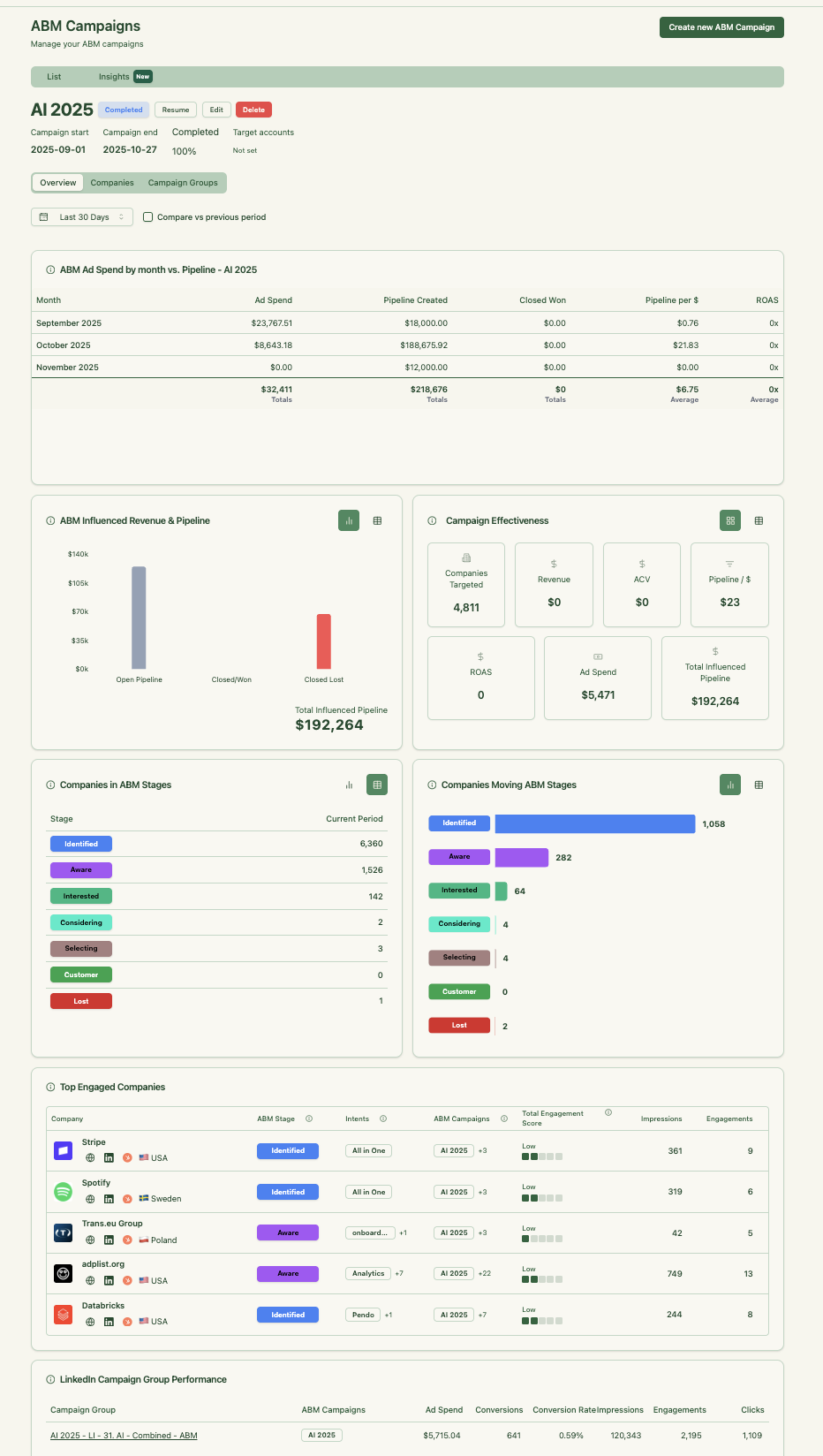In this article, I have compared InsightSync and Dreamdata across features, pricing, reviews and ideal use cases so you can choose what fits your account-based marketing strategy.
I also show how ZenABM can act as a lean, affordable alternative or complementary layer due to its unique features.

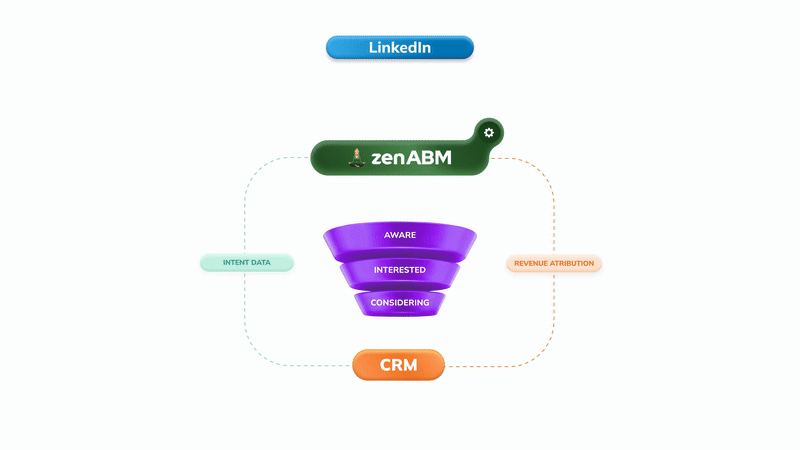
InsightSync vs. Dreamdata: Quick Summary
In case you’re short on time, here’s the gist:
- InsightSync = CI plus ABM analytics backbone for teams already running campaigns in LinkedIn / HubSpot that need one shared, account-centric view for marketing and sales.
- Good when your main problem is “which accounts should we prioritize and can everyone agree on that.”
- Dreamdata = heavy-duty multi-touch attribution and revenue analytics for long B2B journeys.
- Good when the key question is “which channels and campaigns actually drive revenue”, and you are fine with a higher price plus setup effort.
- A third alternative: ZenABM gives account-level LinkedIn ad engagement, plug-and-play engagement to pipeline dashboards, account scoring, ABM stages, CRM sync, first-party qualitative intent, automated BDR assignment, custom webhooks, an AI chatbot, and job title level engagement tracking, starting at $59 per month.
InsightSync Overview: Key Features, Pricing and Reviews
InsightSync is a newer account-based marketing and competitive intelligence platform that puts target accounts, engagement data, and competitor research into one shared system.
The pitch is simple: tighter alignment across GTM teams without adding yet another media platform.
Key Features of InsightSync
InsightSync bundles three modules in one ABM platform.
1. Competitive Intelligence Hub
This is InsightSync’s main differentiator versus ABM-only tools.
The Competitive Intelligence Hub tracks competitors and market moves in one place.
Unified News Feed

InsightSync pulls competitor content from news sites, press releases, and internal or external blog posts into a single feed, so you stop juggling multiple alerts.
You can tag items by competitor or topic, react to important updates, share them with colleagues, and set alerts for specific tags or keywords, for example, when a rival announces an acquisition.
Competitor Radar & Profiling

The CI Hub lets you maintain structured profiles for each competitor, including customer logos, partners, alliances, pricing notes, and positioning, so the whole team uses the same picture.
AI Document Search
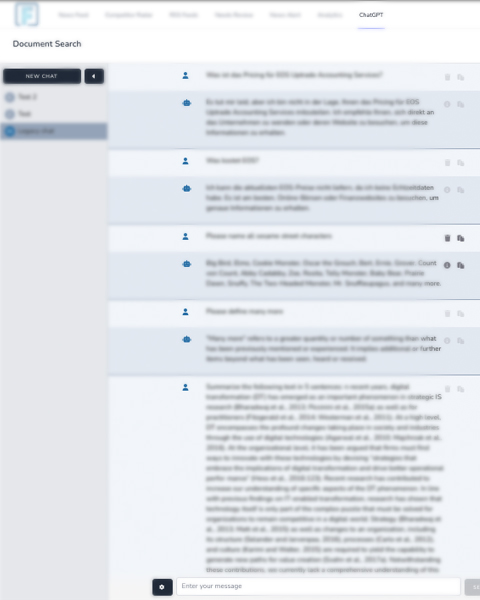
InsightSync ingests PDFs, whitepapers, and internal decks and lets you query them with AI search or pull concise summaries and key points.
2. Account-Based Marketing Hub in InsightSync
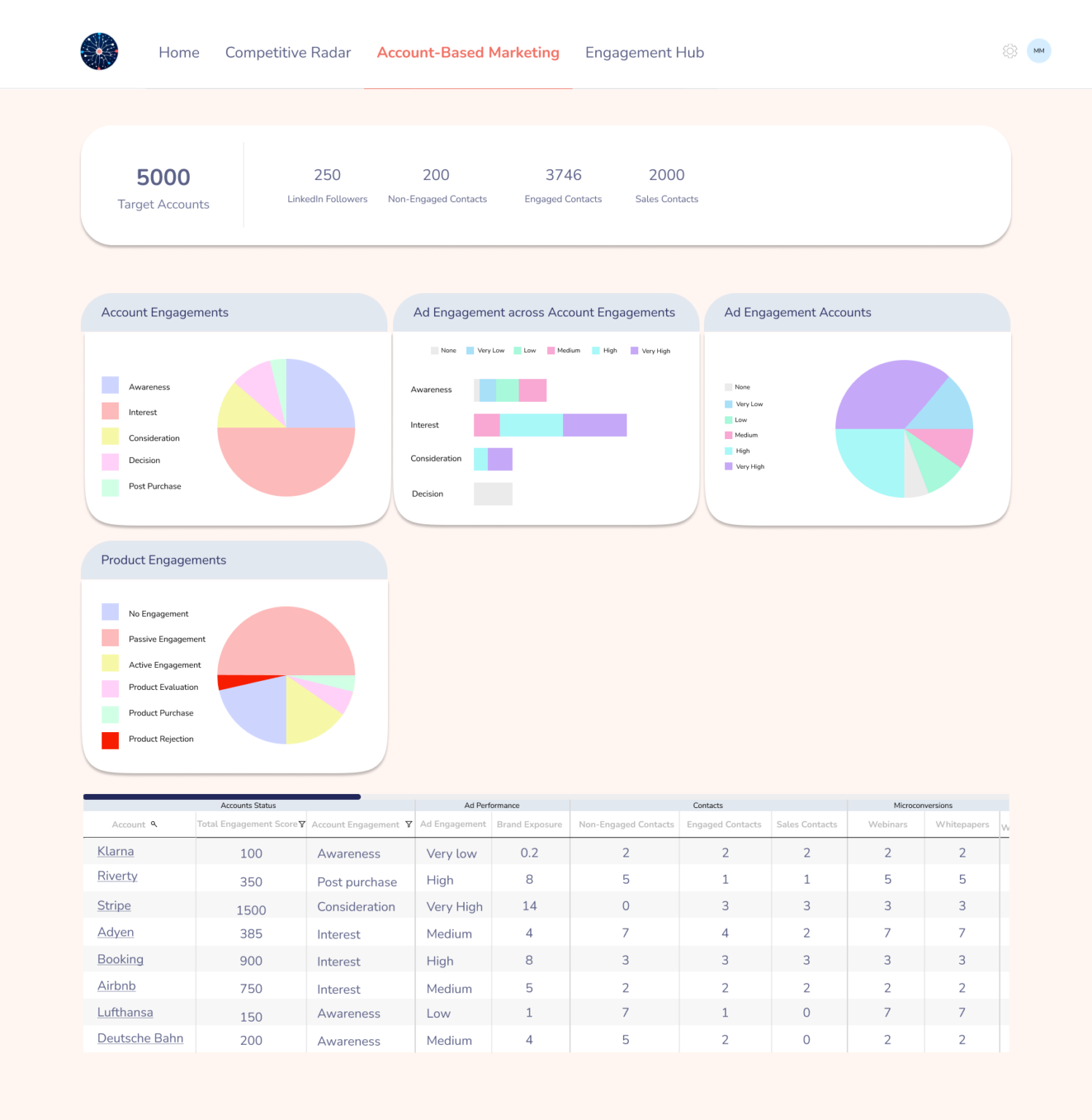
The ABM Hub focuses on three questions:
- Who are we targeting?
- What do we know about them?
- How are we engaging them right now?
It is the home for your account-based marketing workflows.
Target Account List Management
You can import or build your target account list from your CRM or CSV files.
Each account becomes a record that you enrich over time with firmographics such as industry, size, and tech stack from other tools or manual input.
Multi-channel Engagement Tracking
Once your TAL is in place, InsightSync tracks engagement from ads, email, and meetings in one timeline.
You can score actions, so demo requests carry more weight than casual newsletter opens, and high-scoring accounts surface as more sales-ready.
Real-Time Alerts & Optimization
InsightSync flags accounts that heat up or cool down so teams can double down where momentum is growing and step in when important accounts go quiet.
Account-level visibility also supports budget shifts toward active accounts and messaging tweaks for segments that lag.
Scalability & Workflow Automation
InsightSync is positioned to grow with your ABM maturity. It references automated workflows for personalized outreach, although public details are still limited.
Important context: InsightSync’s ABM Hub is channel agnostic and analytics-focused. It is not an ad network or full marketing automation platform like Demandbase or RollWorks. You still run campaigns in LinkedIn, HubSpot, and other tools while InsightSync ingests data for attribution and analysis.
For LinkedIn-heavy teams, ZenABM offers a more direct path via the official LinkedIn Ads API.
It pulls company-level impressions, clicks, engagement, and spend, scores accounts, syncs this data into the CRM as company properties, and routes hot accounts to BDRs automatically.




ZenABM then connects ad-engaged accounts with CRM deals and provides revenue and attribution dashboards so you can measure LinkedIn ABM impact on pipeline and closed revenue.

3. Engagement Hub
InsightSync’s Engagement Hub consolidates account activity such as web visits, ad clicks, email opens, and event attendance across contacts.
It highlights trends like rising interest or sudden silence so teams can focus on active accounts and re-engage those going quiet.
At the contact level, you can see who viewed pricing, who registered but skipped webinars, and who stays engaged, which helps sales tune outreach and marketers refine content.

These patterns help you map buyer roles and intent, infer funnel stage, and trigger timely follow-ups.
The Engagement Hub does not execute campaigns. Its job is to keep marketing and sales aligned around a shared view of account engagement and behavior.
InsightSync Pricing: How Much Does It Cost?
InsightSync sits in the premium bracket and targets teams that want a combined ABM plus CI backbone.
Here is the pricing as of late 2025:

- Self Service – €699/month: All three hubs with unlimited users. You handle setup and connect data manually or via the HubSpot integration, currently the only native CRM. Includes a 30-day free trial.
- Pro – €899/month (+ €3,500 one-time setup fee): Adds white glove onboarding. InsightSync’s team connects data, configures alerts and dashboards, and runs a one-off competitor and partner research project, plus quarterly reviews. The monthly step up from Self Service is modest, but the one-time service fee is sizeable.
- Custom – Contact for pricing: For teams on Salesforce, Microsoft Dynamics, Zoho, or Pipedrive. InsightSync is still building these integrations and offers early access. Custom plans add bespoke CRM work, technical consulting, prioritized features, and priority support.
InsightSync is cheaper than the biggest ABM suites, but still an upper mid-market spend. It works when you treat it as a CI system, ABM analytics layer, and light CRM adjunct in one.
Earlier stage or lean teams may still find the roughly €8K per year starting point heavy.
By contrast, ZenABM starts at about $59 per month for its starter plan, a small fraction of that.
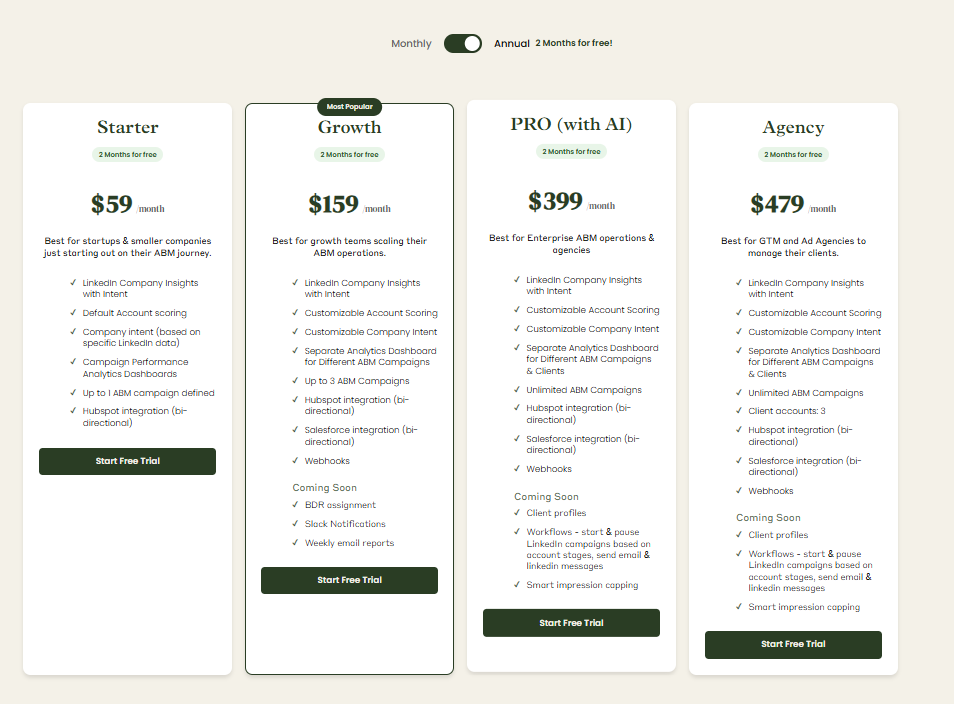
User Impressions and Reviews
Public feedback on InsightSync is still limited, but a few patterns show up:
- Origin story – built by practitioners: InsightSync began as an internal tool from a B2B marketing lead at Riverty before spinning out. ZenABM has a similar origin: Michael Jackowski built it for Emilia Korczynska at Userpilot to fix LinkedIn ABM reporting, then turned it into a dedicated LinkedIn ABM SaaS. Customers like Productive and Spear Growth report strong results with ZenABM.

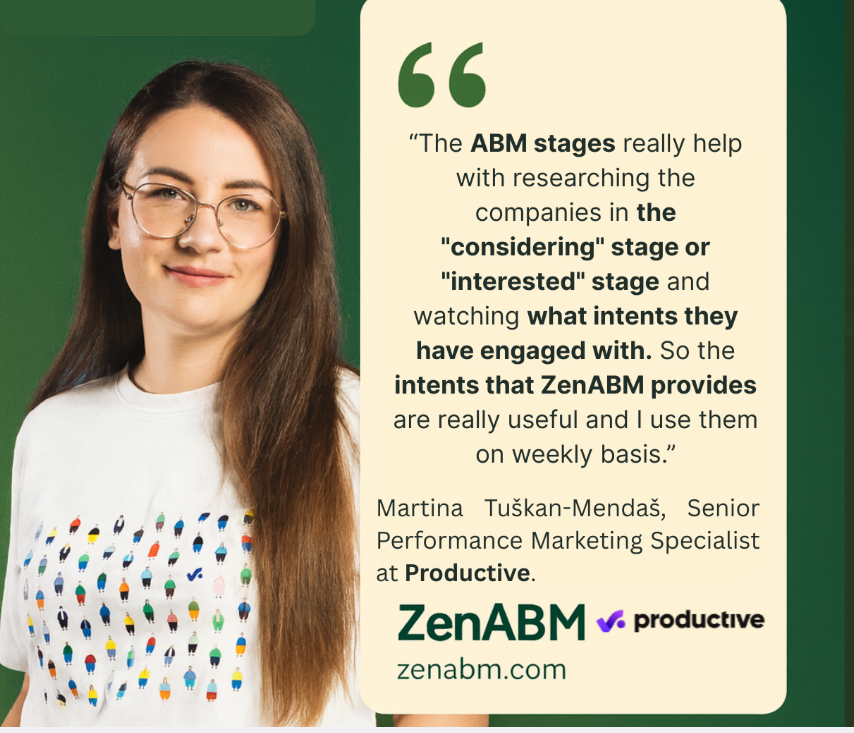
- Website testimonial: A testimonial from “John Doe, Riverty” says InsightSync has aligned marketing and sales and that the CI Hub alone saves hours each week.
- No G2 or TrustRadius footprint yet: As of November 2025, InsightSync does not have listings or reviews on G2 or TrustRadius.
Dreamdata Overview: Key Features, Pricing, and Reviews
Dreamdata bills itself as a B2B “Activation & Attribution Platform” that can map every buyer touchpoint and tie it to revenue.
Let’s look at its key features, pricing, and reviews.
Key Features of Dreamdata
Dreamdata’s feature set is extensive.
It aims to be your one-stop shop for connecting marketing spend to revenue outcomes.
Here are the highlights:
Multi-Touch Attribution Models
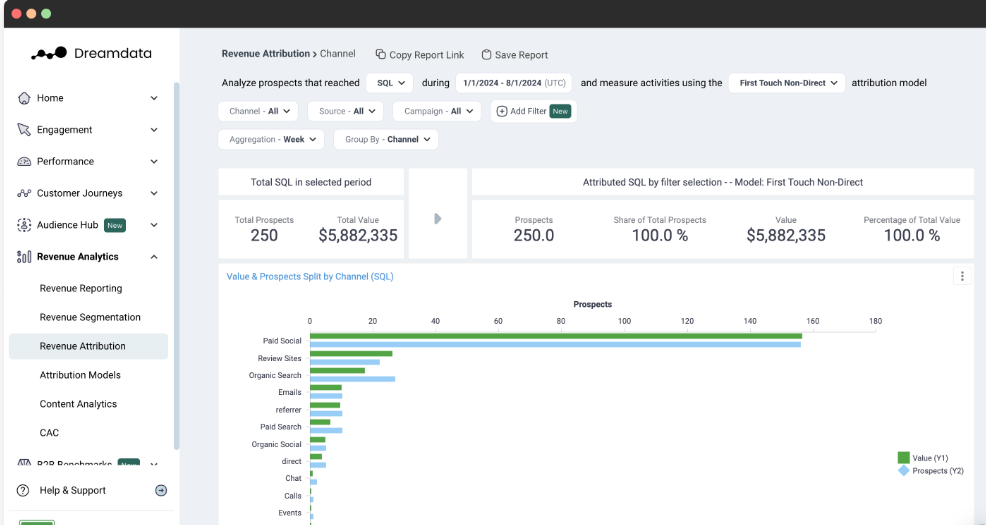
Dreamdata provides a buffet of attribution models: first-touch, last-touch, W-shaped, time decay, and even fancy “data-driven” models.
In fact, it offers seven out-of-the-box multi-touch models, so you can slice and dice credit for a sale across all the touches that led up to it.
Marketers can finally move beyond the simplistic “last click wins” approach.
Of course, with great flexibility comes great complexity.
More models mean more chances to argue with your colleagues over which model is “right” for your business. (Spoiler: none are perfect.)
Plus, by aggregating data from your CRM, website, ads, etc., into a single timeline, Dreamdata helps expose how that whitepaper download, webinar, and six LinkedIn ad clicks all contributed to a deal.
Revenue Analytics & Funnel Reporting
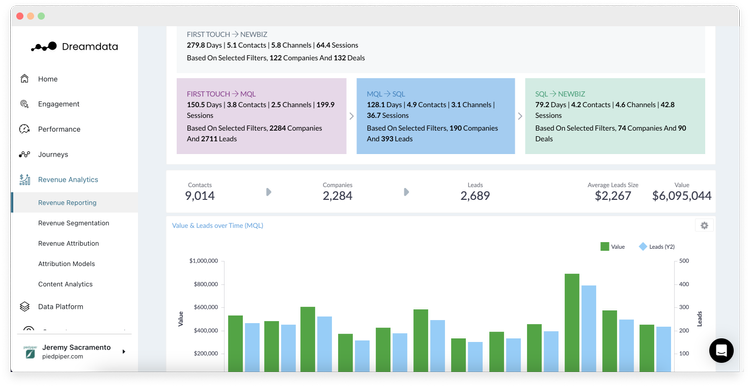
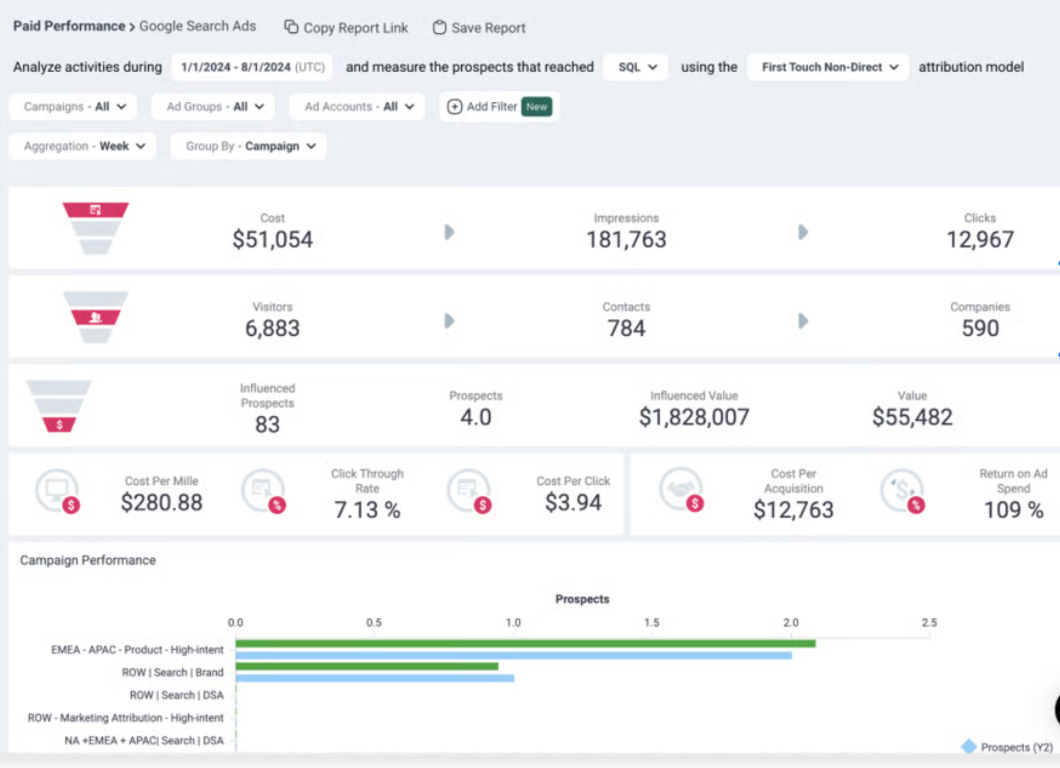
The platform doesn’t stop at attribution models.
It rolls up data into slick revenue analytics dashboards, showing pipeline and ROI by channel, campaign, and content piece. etc.
You can track metrics like Time to Revenue (the time from first touch to closed deal) and view pipeline velocity by stage.
Dreamdata basically builds a complete B2B customer journey map for each account, then lets you report on it from multiple angles.
In practice, some users on G2 mention that not all pre-built reports are equally useful, and it can take a while to figure out which ones actually matter for your business. The learning curve is real (more on that shortly).
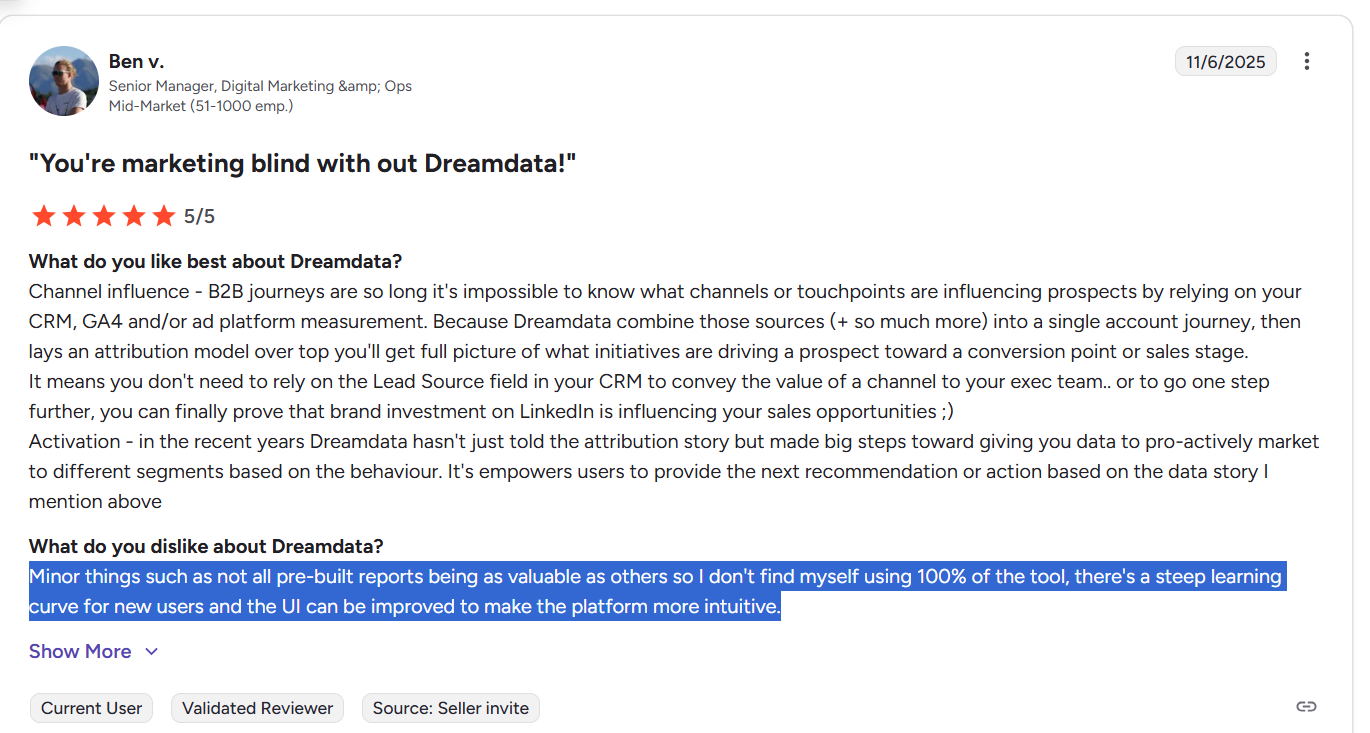
By the way, ZenABM also provides detailed plug-and-play account-based LinkedIn ad revenue attribution dashboards for a starting price of just $59/month.
Account-Based Data Views (ABM Capabilities)
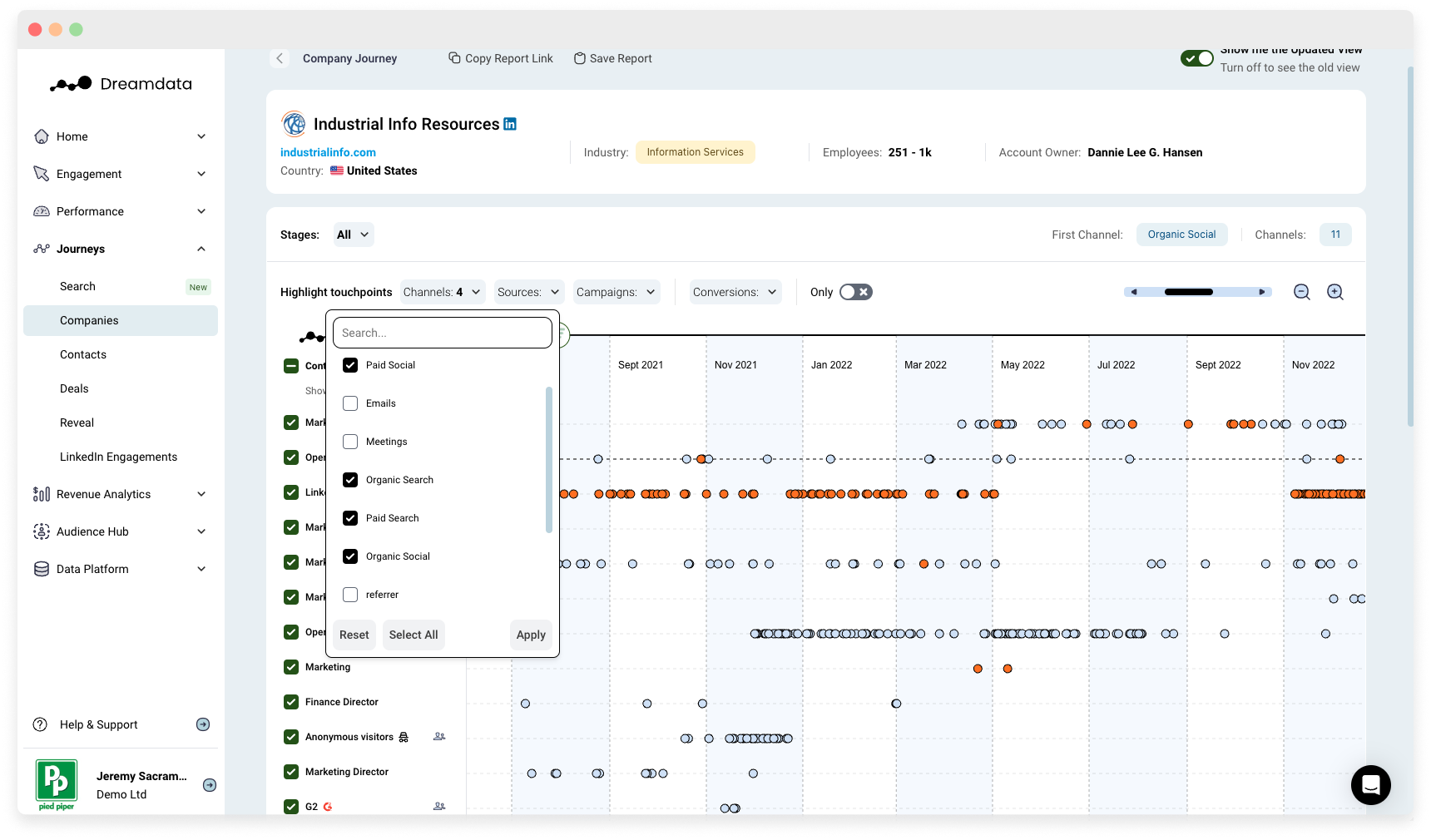
Dreamdata is keen to position itself as an ABM ally.
It automatically organizes all those individual touchpoints into account-level journeys, so you see how an entire buying committee moved from initial engagement to close.
There’s an “ABM view” that marketers love to whip out to prove their influence.
One marketing director joked that whenever Sales brags about a “sales-generated” deal, her team flashes the Dreamdata ABM view showing how Marketing “surrounded that account across multiple channels for months.”

In other words, Dreamdata helps marketers claim credit (and rightfully so) for warming up target accounts.
It also tracks account-level engagement.
The “Reveal” module identifies which companies are engaging with your brand most, scores their activity, and even flags when an account that fits your ICP visits your site or interacts with your content.
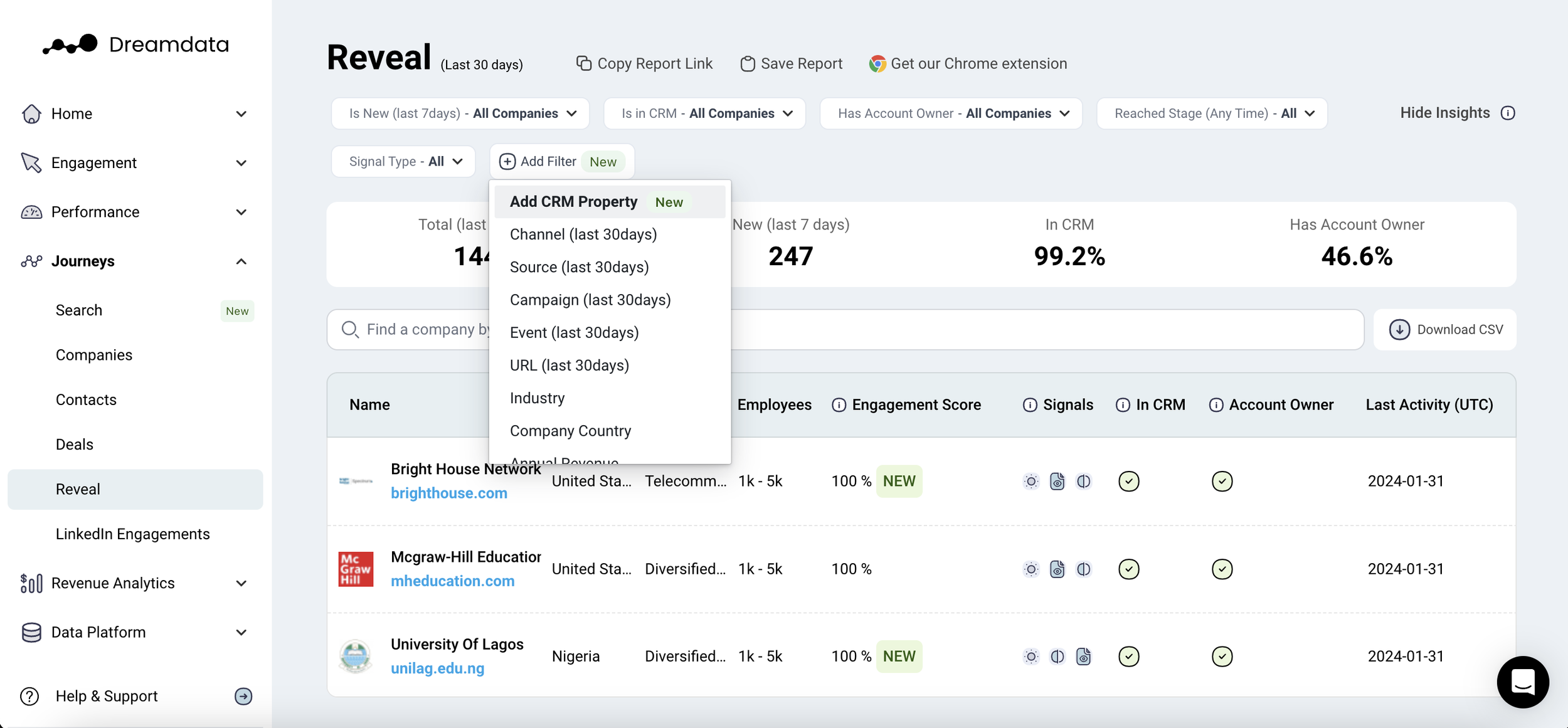
Audience Building & Activation
Beyond analytics, Dreamdata ventures into light Customer Data Platform (CDP) territory.
It lets you build precise audiences using “unlimited filtering” across all your data, and then sync those audiences to major ad platforms.
Example: You could create a segment of all accounts that visited your pricing page twice in the last week and push that list to LinkedIn for a retargeting campaign.
Dreamdata’s Audience Hub makes this possible without a data engineer on staff.
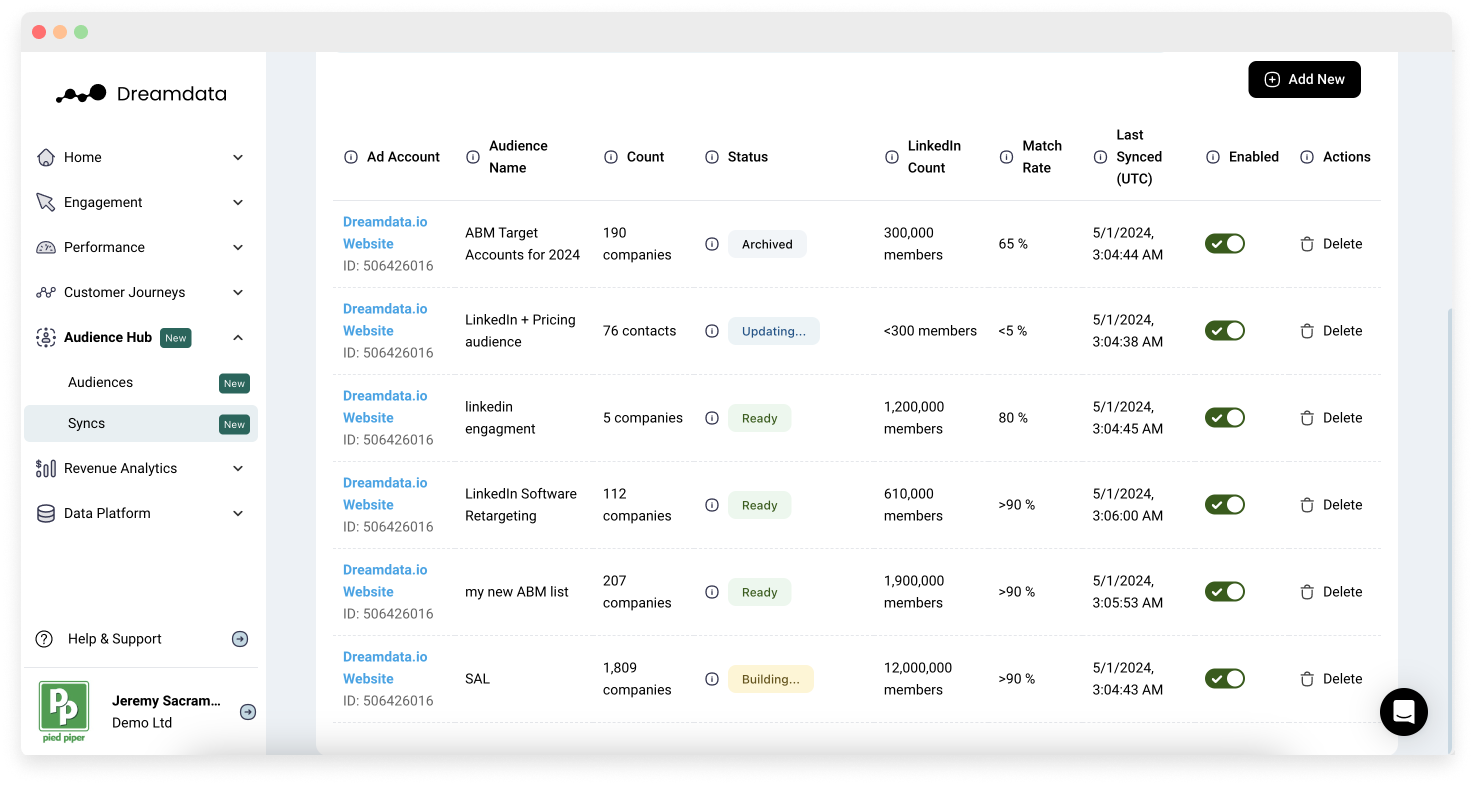
It also recently launched one-click conversion syncing to ad platforms.
This means if a lead becomes an SQL or a deal closes in your CRM, Dreamdata can auto-feed that event back into Google, Facebook, LinkedIn, etc., helping their algorithms optimize for actual revenue, not just form fills.
Integrations

Dreamdata boasts 40+ integrations spanning CRMs, marketing automation, ads, analytics, and more.
Big ones:
- Salesforce
- HubSpot
- Microsoft Dynamics
- Marketo/Eloqua
- Google Ads
- LinkedIn Ads
- Facebook/Meta Ads
- Bing Ads
- Twitter Ads
- G2 intent data
- Capterra
- Segment
- Data warehouses
- Outreach
- Salesloft
- Slack
Dreamdata Pricing: How Much Does It Cost?
Dreamdata isn’t the most transparent about pricing on its homepage.
Here’s what we know:
- Free Plan: Dreamdata offers a free tier, which is relatively rare for B2B attribution tools. The free plan includes the basics: account-level tracking, revenue analytics, attribution, audience building, and even intent signals (like their account Reveal). It might cap how much data or how many integrations you can use. Think of it as a toe-in-the-water, not a long-term solution for a serious marketing team (unless your needs are extremely simple).
- Paid Plans: According to G2 and TrustRadius, Dreamdata’s “Activation Starter” plan starts at $750 per month. This likely unlocks more integrations and data volume. For advanced attribution features, there’s an “Attribution Advanced” tier, which is enterprise (Contact Us) pricing. Dreamdata’s pricing positions it as a premium solution; several reviewers mention it’s priced higher than competitors in the attribution space. And unlike some competitors, there’s no simple self-serve credit card signup for the high-end plan – you’ll be in enterprise negotiation land. This can make it hard to gauge the true cost.
- Vendr, by the way, puts the median Dreamdata pricing at $27k/mo.
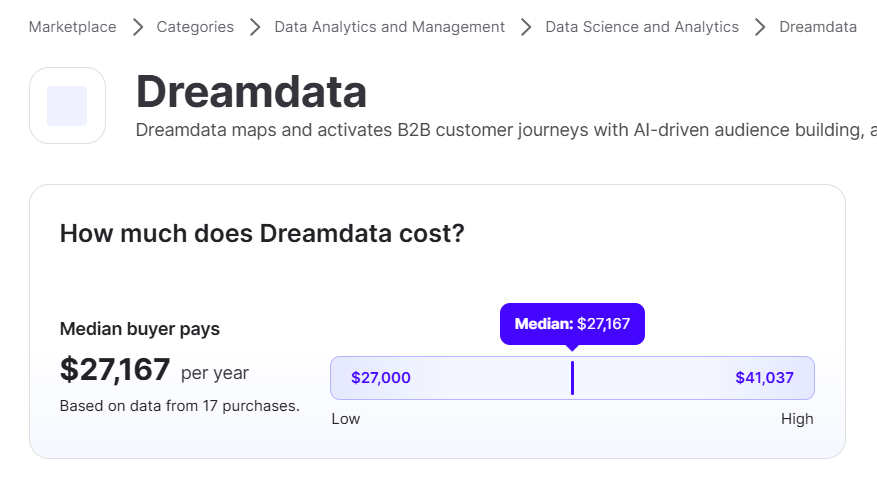
If you are looking for a leaner yet effective tool, I present ZenABM, starting at just $59/month.
ZenABM offers account-level LinkedIn ad engagement tracking, ad engagement-to-pipeline analytics with plug-and-play dashboards, account scoring, ABM stage tracking, CRM sync, first-party qualitative intent, automated assignment of BDRs to hot accounts, custom webhooks, and ad engagement tracking at the job-title level.


User Impressions and Reviews
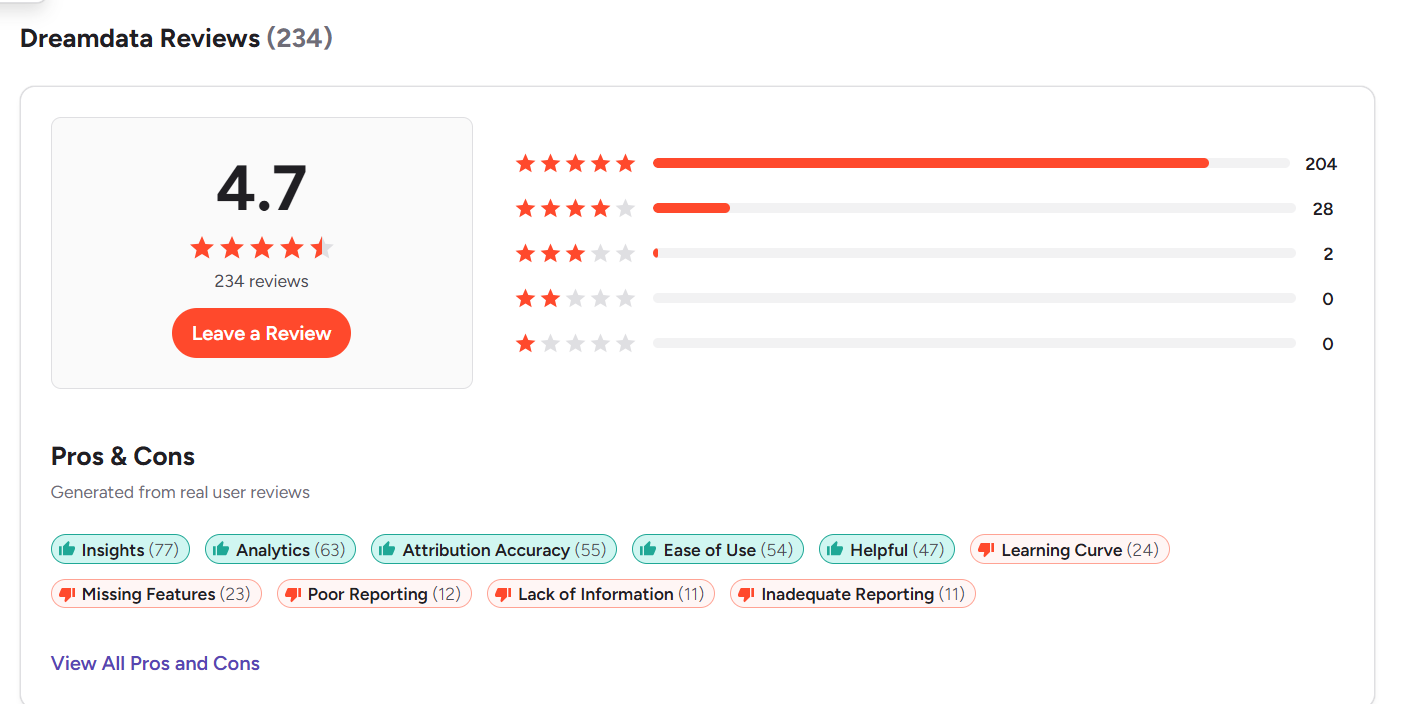
No marketing tool is loved by everyone, and Dreamdata is no exception.
I scoured review sites for the common themes in user feedback.
Here’s the consensus from the trenches:
- “We Can Finally See What’s Working!” (Praise): Many marketers sound genuinely relieved that a tool like Dreamdata exists. They’re happy to leave behind the dark days of single-touch attribution. Users frequently praise Dreamdata for providing clarity in B2B funnels that were previously opaque. For instance, one reviewer talked about “deep, nuanced insights” into the marketing and sales funnel, crediting Dreamdata with revealing the multi-channel influence that their CRM and Google Analytics couldn’t show. Others love how it “gives us the full picture” of customer journeys and helps decide which campaigns actually drive the pipeline. Content marketers mention using Dreamdata to prove that their top-of-funnel efforts (like blogs or webinars) contributed to downstream revenue (something hard to do before). And almost everyone appreciates the ability to measure Return on Ad Spend (ROAS) more holistically. A marketing director on G2 said, “Without Dreamdata, I’d still be relying on first/last touch and likely over- or under-investing in channels”. Now she uses Dreamdata daily to watch how content and ads influence conversions. Another user gave a concrete win: integrating Dreamdata with LinkedIn showed a 3× increase in companies reached and lowered cost per SQL, which made it easier to justify ad budget to leadership. Several reviews also praise Dreamdata’s customer support team, calling them “awesome” and “super helpful” in getting set up and answering questions.
- “It’s Powerful… Once You Figure It Out” (Pain Points): On the flip side, users don’t hold back about Dreamdata’s quirks and shortcomings. A common gripe is the usability and learning curve. One enterprise user gave Dreamdata a lukewarm 3.5/5, saying they “really wish Dreamdata had the capability [to] compare two time periods like Google Analytics” and noted limited ways to customize views of the data. The limited customization complaint pops up often – marketers want to tailor reports or dashboards more than Dreamdata easily allows. There’s also the issue of not using 100% of the tool: “Some pre-built reports aren’t that valuable, I don’t find myself using 100% of Dreamdata”, said one reviewer, who also mentioned the UI isn’t super intuitive for new users. Newbies can feel overwhelmed by the myriad menus (Customer Journeys, Attribution, Revenue Analytics, Signals, etc.). As another user put it, “there are new features all the time, which is great, but some core elements could be improved” – a polite way of saying the product sometimes prioritizes shiny new features over polishing the basics. Data setup is another recurring theme: Dreamdata is only as good as the data you feed it. One candid reviewer said there’s nothing bad to say about Dreamdata itself, “The only downside is that you have to connect all data sources and make sure you’re sending the right data – garbage in, garbage out.” It took their team 2–3 weeks to get everything set up correctly. So, expect a significant onboarding period where you’re aligning tracking, fixing CRM data hygiene issues, and generally cleaning house.
- Common Gripe: Price and ROI: It’s worth noting that a few users mention cost as a pain point. Not surprising given the earlier pricing discussion. “Dreamdata is priced higher than its competitors,” one industry blog observed bluntly, summarizing user reviews. If a marketing team invests big bucks in an attribution tool, they expect big returns (or at least time savings).
InsightSync vs. Dreamdata: Key Differences
Here is a direct comparison of InsightSync and Dreamdata across core dimensions.
| Feature category | InsightSync | Dreamdata |
|---|---|---|
| Core positioning | Competitive intelligence plus ABM analytics platform that centralizes target accounts, engagement and CI data | B2B activation and attribution platform that connects all touchpoints to pipeline and revenue |
| Primary focus | Clarity and alignment for GTM teams on who to target, how they engage and what competitors are doing | Explaining which channels and campaigns actually drive revenue across multi touch journeys |
| Main modules | Competitive Intelligence Hub, ABM Hub, Engagement Hub | Attribution models, revenue analytics, account journeys, Reveal intent, Audience Hub |
| Audience model | Account based, focused on target account lists, firmographic enrichment and account plus contact timelines | Account based view of all contacts and touchpoints, organized into journeys for attribution and activation |
| Ad execution | No native ad delivery, reads engagement data from channels such as LinkedIn, email and events | No full ad buying platform, but sends conversion and audience data back into ad networks for optimization |
| Analytics strengths | Account engagement timelines, scoring, competitor tracking and CI informed ABM planning | Multi touch attribution models, revenue and funnel reporting, time to revenue and ROAS by channel and campaign |
| Intent and engagement signals | First party engagement from your tools, surfaced at account and contact level with alerts on heating or cooling accounts | Combined touchpoint data across web, CRM, ads and content, plus Reveal module highlighting high intent accounts |
| Activation features | References workflow automation and alerts, but details are lighter and more focused on analytics | Audience Hub with granular filters and audience sync to ad platforms, plus one click conversion syncing |
| Integrations | Native HubSpot integration, custom work for Salesforce and other CRMs on higher tiers | Broad integration list across CRMs, MAPs, ad platforms, data tools and sales engagement tools |
| Pricing model | Tiers starting around €699 per month, rising with onboarding services and custom CRM integrations | Free plan for basics, paid plans reported from roughly mid three figures per month up to premium enterprise tiers |
| Cost dynamics | Fixed upper mid market platform spend that makes sense if used as CI plus ABM backbone | Premium attribution platform cost that needs meaningful pipeline gains to justify the investment |
| Review footprint | Limited public reviews and no major review site presence yet | Healthy review volume on B2B software sites with frequent praise for journey clarity and support, plus notes on complexity and price |
| Ideal team profile | B2B teams with existing ad and MAP tools that want a single source of truth for accounts and competitors | Data mature marketing and revenue teams that want serious attribution and are ready for setup work and a learning curve |
| Best use case | Aligning marketing and sales on which accounts to pursue, when and with what competitive context | Proving which channels and campaigns create pipeline and revenue, and feeding that back into spend decisions |
| Where ZenABM fits | Acts as a LinkedIn first companion when you want company level ad engagement and first party intent surfaced in the CRM | Offers a leaner alternative when you mainly care about LinkedIn ABM, CRM sync and revenue attribution rather than full multi channel models |
InsightSync vs. Dreamdata: So, Which Is Better for ABM?
InsightSync is a better fit if your main problem is alignment and clarity across marketing and sales.
It centralizes target accounts, engagement data and competitor intel so GTM teams share the same view of who to prioritize and why, while you keep running campaigns in LinkedIn, HubSpot and other existing tools.
You treat it as a combined CI plus ABM analytics backbone.
Dreamdata is a better fit if your core challenge is understanding which channels, campaigns and touchpoints actually drive revenue across long, multi-touch B2B journeys.
Its strength lies in attribution models, revenue analytics, account journeys and activation audiences that sync back into ad platforms. It suits teams that are ready to invest in advanced attribution and can handle the setup and learning curve.
ZenABM as a LinkedIn-First, First-Party Lean ABM Alternative
There is also a third option: ZenABM.
ZenABM is built for teams that rely on LinkedIn as the primary ABM channel and want first-party accuracy, automation, and revenue visibility without the price or complexity of multi-channel suites.
Account-Level LinkedIn Engagement Tracking


ZenABM connects to the official LinkedIn Ads API and captures account-level data for all campaigns so you can see which companies see, click, and engage with your ads.
Because this is first-party data from LinkedIn’s environment, it is more reliable than IP or cookie-based visitor ID.
A Syft study puts IP-based identification at around 42 percent accuracy.

ZenABM treats LinkedIn ad engagement itself as first-party intent. When several people in one company keep engaging with your ads, that is a strong buying signal without rented intent feeds.
Real-Time Engagement Scoring + Full Touchpoint Timeline

ZenABM updates engagement scores as accounts interact with your ads across campaigns, so you can see who is heating up over short or long windows and let marketing and sales prioritize accounts that show real intent.
ZenABM also shows the full touchpoint timeline for each company:

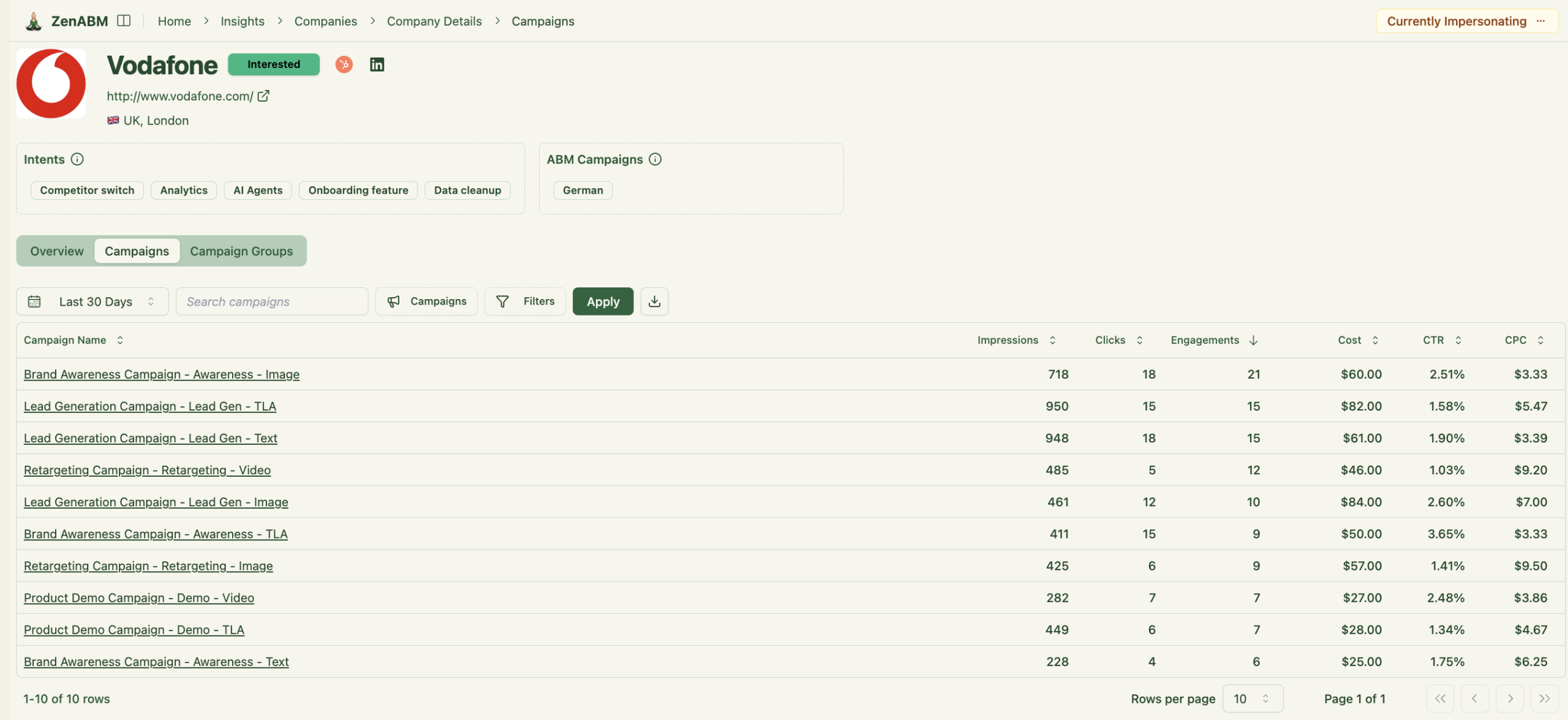
ABM Stage Tracking

ZenABM lets you define stages such as Identified, Aware, Engaged, Interested, and Opportunity and automatically places accounts in the right stage using scores and CRM data.
You control thresholds, and ZenABM tracks movement over time.
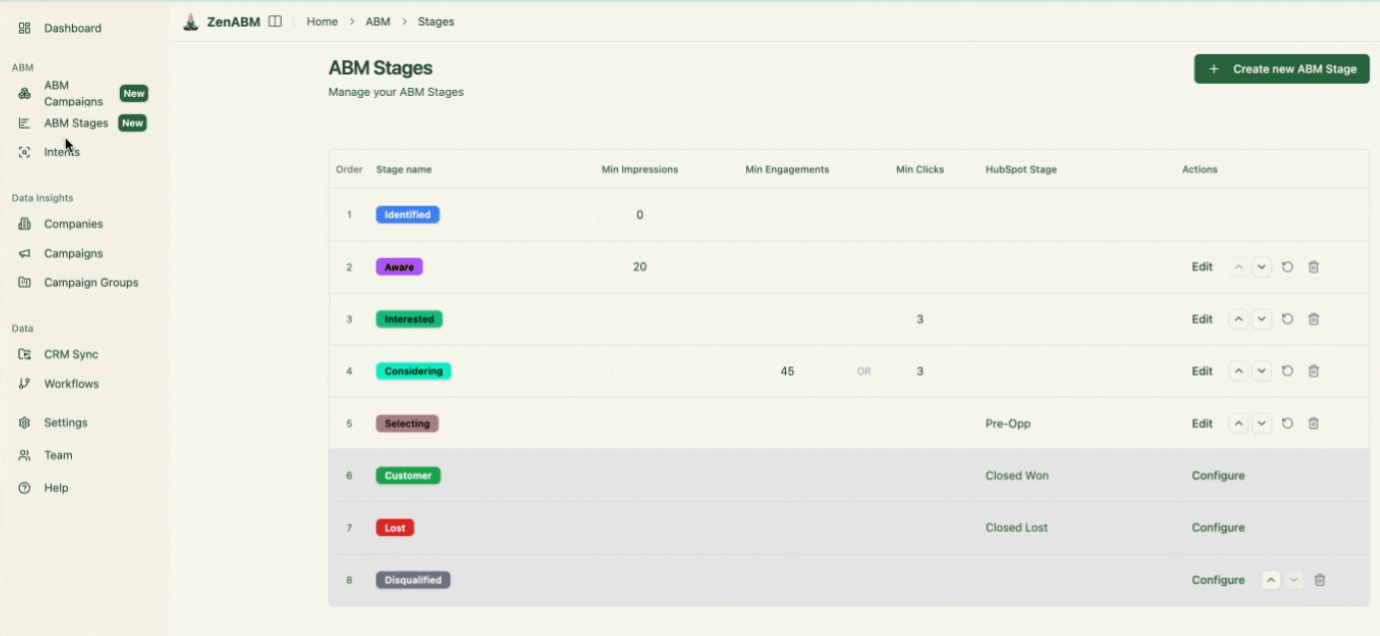

This gives you funnel visibility similar to larger suites, but powered by LinkedIn data.
CRM Integration and Workflows
ZenABM integrates bi-directionally with CRMs like HubSpot and adds Salesforce sync on higher tiers.
LinkedIn engagement data flows into the CRM as company-level properties:

Once an account crosses your score threshold, ZenABM updates the stage to Interested and automatically assigns a BDR.

Intent Tagging from Ad Engagement
ZenABM lets you derive intent topics from LinkedIn campaigns by tagging campaigns by feature, use case, or offer.
ZenABM then shows which accounts engage with which themes.
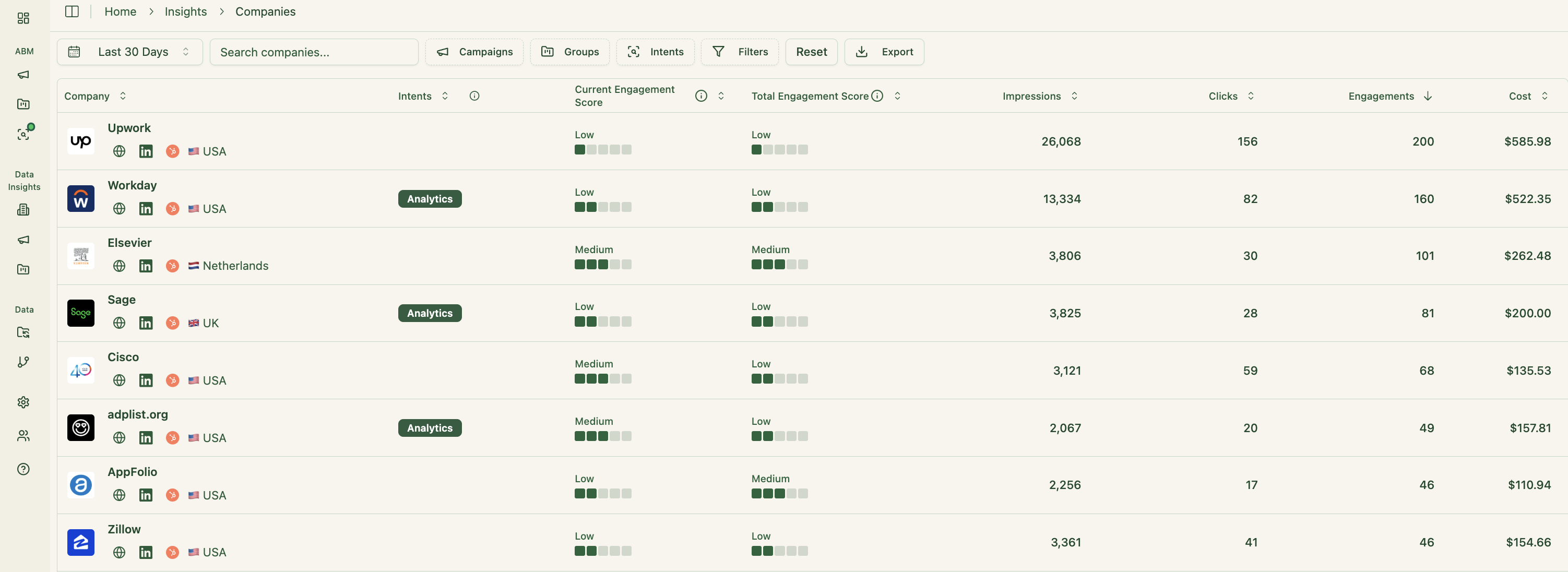
This is clean, first-party intent from owned interactions.
You can push these topics into your CRM so sales and marketing can tailor outreach to what each company has actually explored.
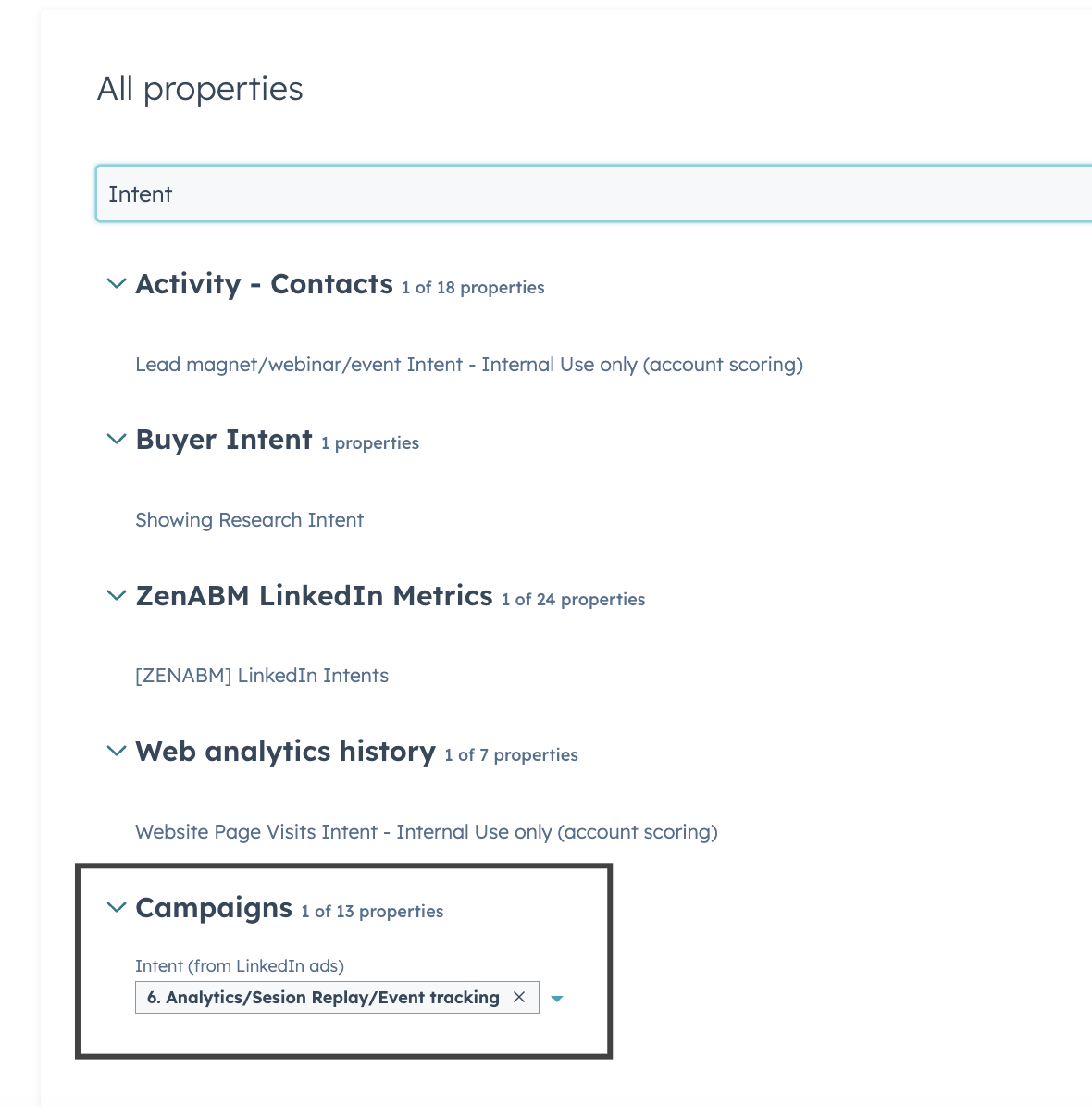
Built-in Dashboards and ABM Analytics
ZenABM ships with dashboards that connect LinkedIn ads to account engagement, stage movement, and revenue.
- You can monitor performance from high-level ABM campaigns down to LinkedIn campaign groups and individual ads:
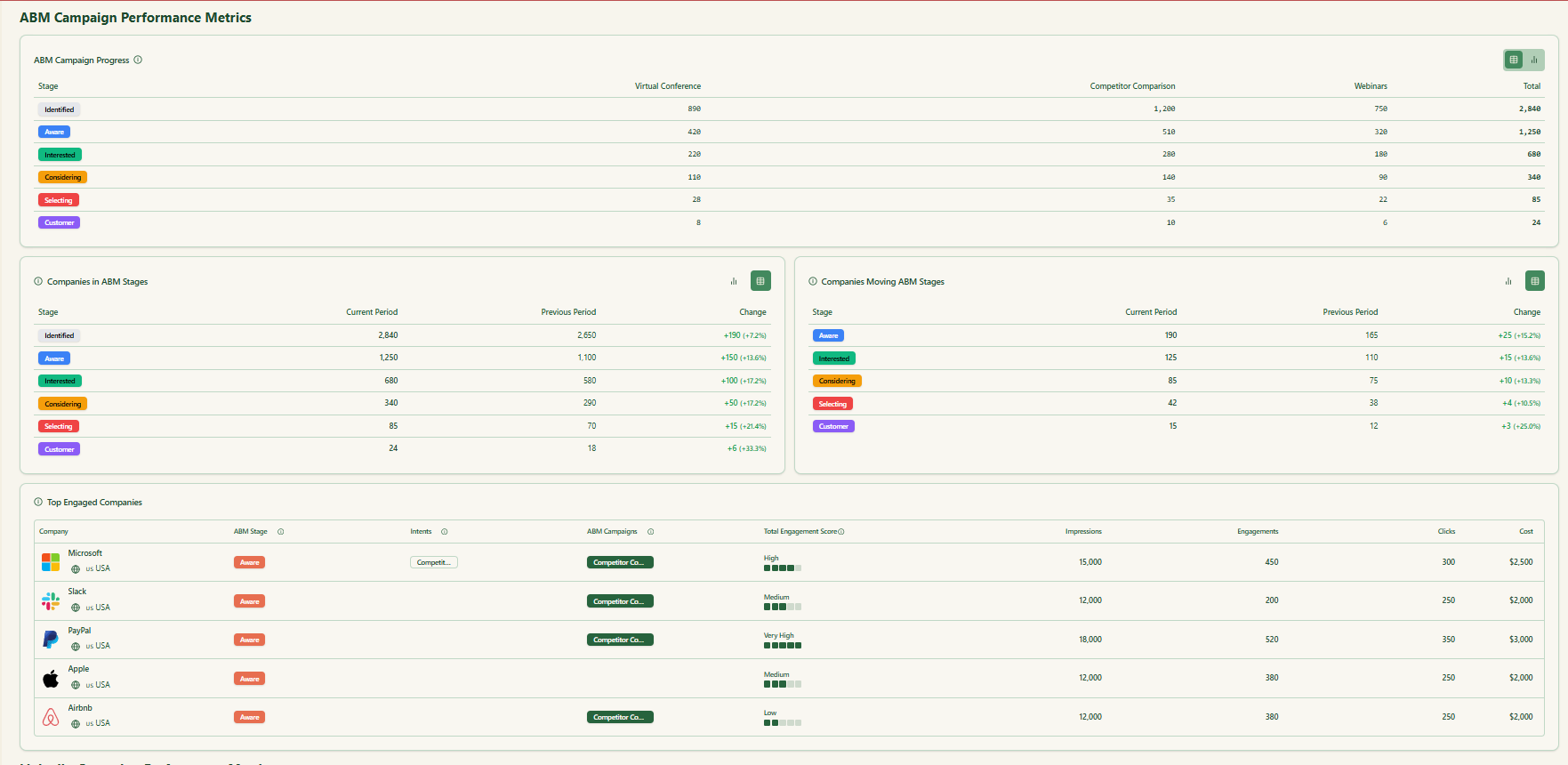

- Because ZenABM stores deal value and ad spend per company and per campaign, it can calculate ROAS, pipeline per dollar, and other revenue metrics and show pipeline contribution.

Custom Webhooks
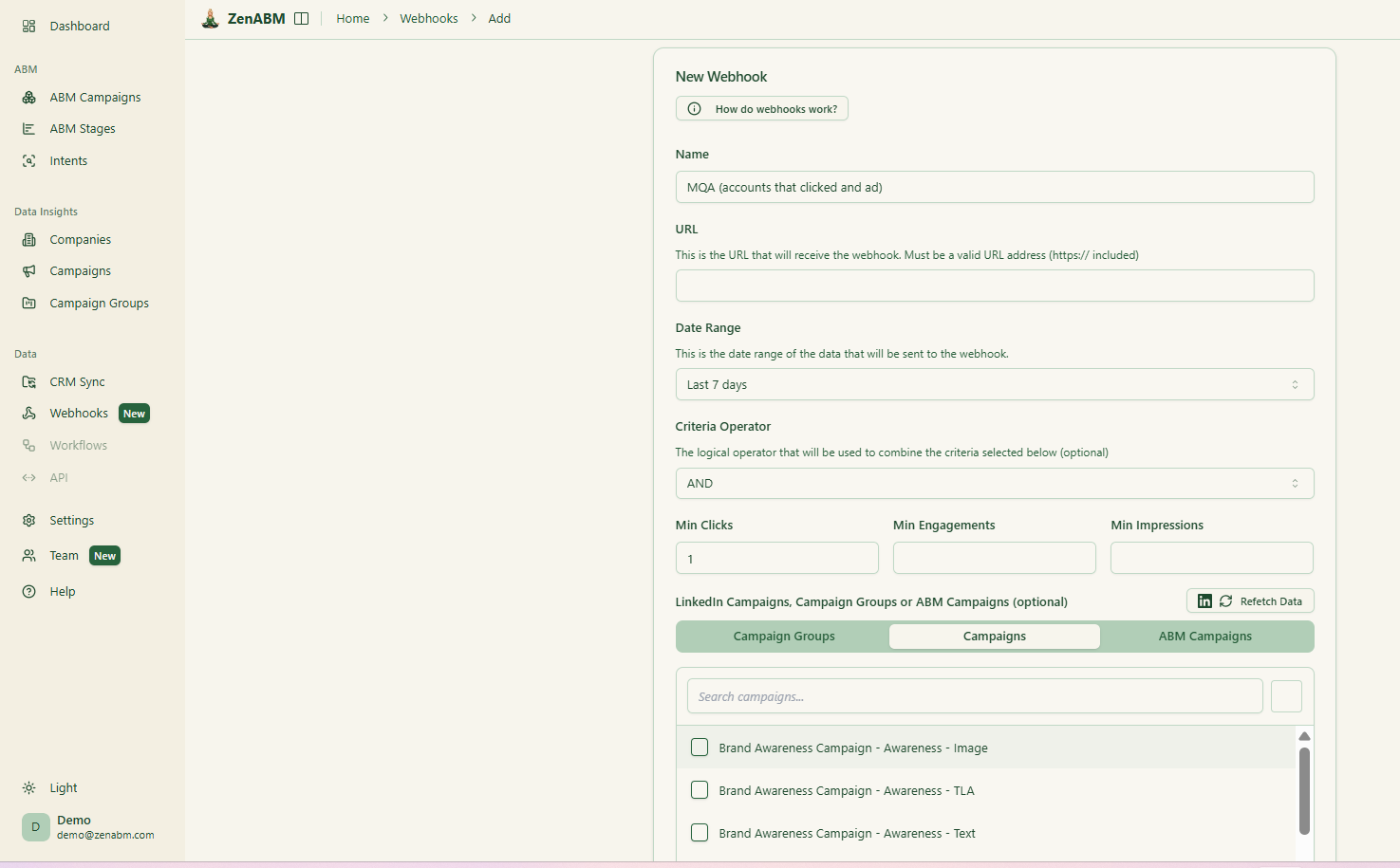
ZenABM’s custom webhooks let you push events into your stack, for example Slack alerts, enrichment flows, or other ops automations.
Job-Title Analytics
ZenABM shows which job titles engage with your creatives and gives dwell time and video funnel analytics.
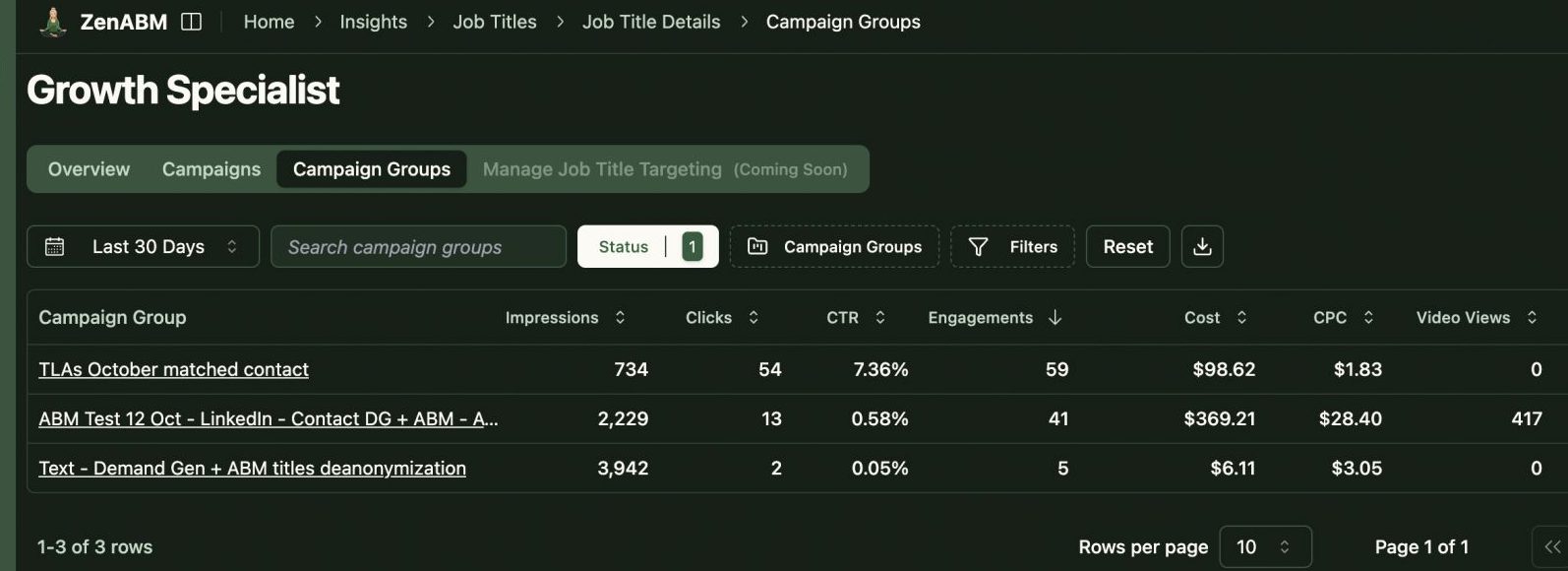
ABM Campaign Objects for True Multi-Campaign Attribution
Most tools treat each LinkedIn campaign separately. ZenABM lets you group several into one ABM campaign object so you can see performance across regions, personas, or creative clusters.
Instead of juggling fragmented reports in Campaign Manager, you see spend, pipeline, account movement, and ROAS for the entire initiative.
AI Chatbot to Analyze Your LinkedIn and ABM Data
ZenABM includes an AI chatbot on top of your LinkedIn API data and ABM model.
You can ask questions such as “Which accounts moved from Interested to Selecting last month?” or “What is my pipeline per dollar on retargeting?” and get answers based on live data.
Multi Client Workspace for Agencies
For agencies, ZenABM offers a multi-client workspace.
You can manage multiple ad accounts and clients in one environment, each with its own ABM strategy, dashboards, and reporting, instead of constantly switching accounts in Campaign Manager.
ZenABM Pricing

Plans start at $59 per month for Starter, $159 for Growth, $399 for Pro (with AI), and $479 for Agency.
The agency plan still stays under $6,000 per year.
All tiers include core LinkedIn ABM features. Higher tiers mostly increase limits and add Salesforce sync.
Plans are available monthly or annually, and every plan includes a 37-day free trial.
Conclusion
InsightSync is best treated as a combined CI and ABM analytics backbone for teams that already run campaigns in tools like LinkedIn and HubSpot and now need a shared, account centric view of who to prioritize and how competitors are moving.
It shines when the main challenge is getting marketing and sales to look at the same data and agree on account focus.
Dreamdata is stronger when the core question is “which activities actually drive revenue” across long B2B journeys.
Its multi-touch attribution, revenue analytics, and journey views help teams move budgets away from vanity metrics and toward channels that move deals forward, as long as you are ready to invest in data setup, onboarding and a higher price point.
For LinkedIn-heavy ABM programs that want reliable, company-level intent, ABM stages, CRM centered workflows and a clear pipeline per dollar without a large attribution suite budget, ZenABM offers a lean third path.
It can sit alongside either platform or replace them for teams that care most about turning LinkedIn ad engagement into qualified accounts, pipeline and revenue at a predictable cost.
Try ZenABM now for free (37-day free trial) or book a demo to know more!


